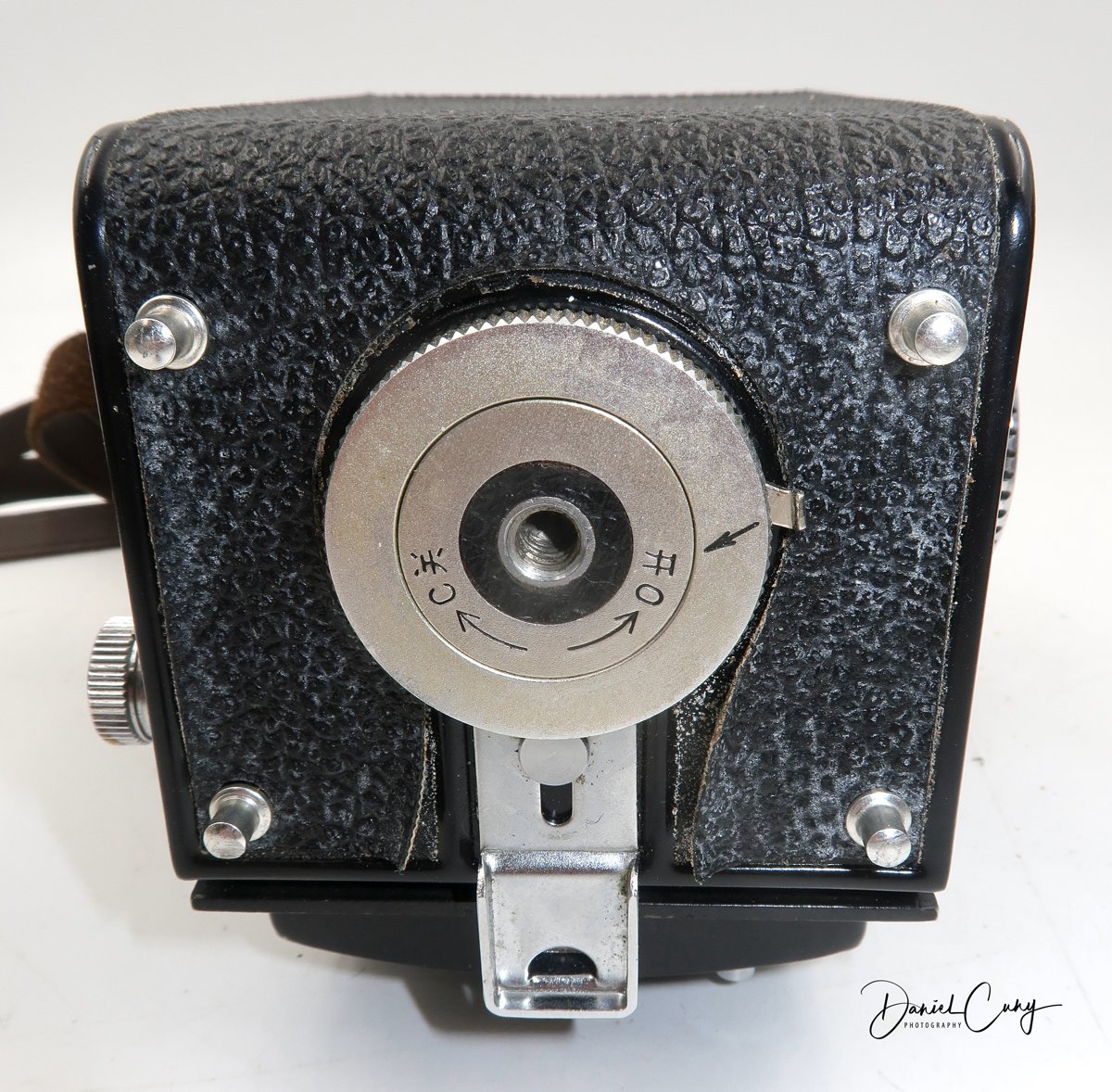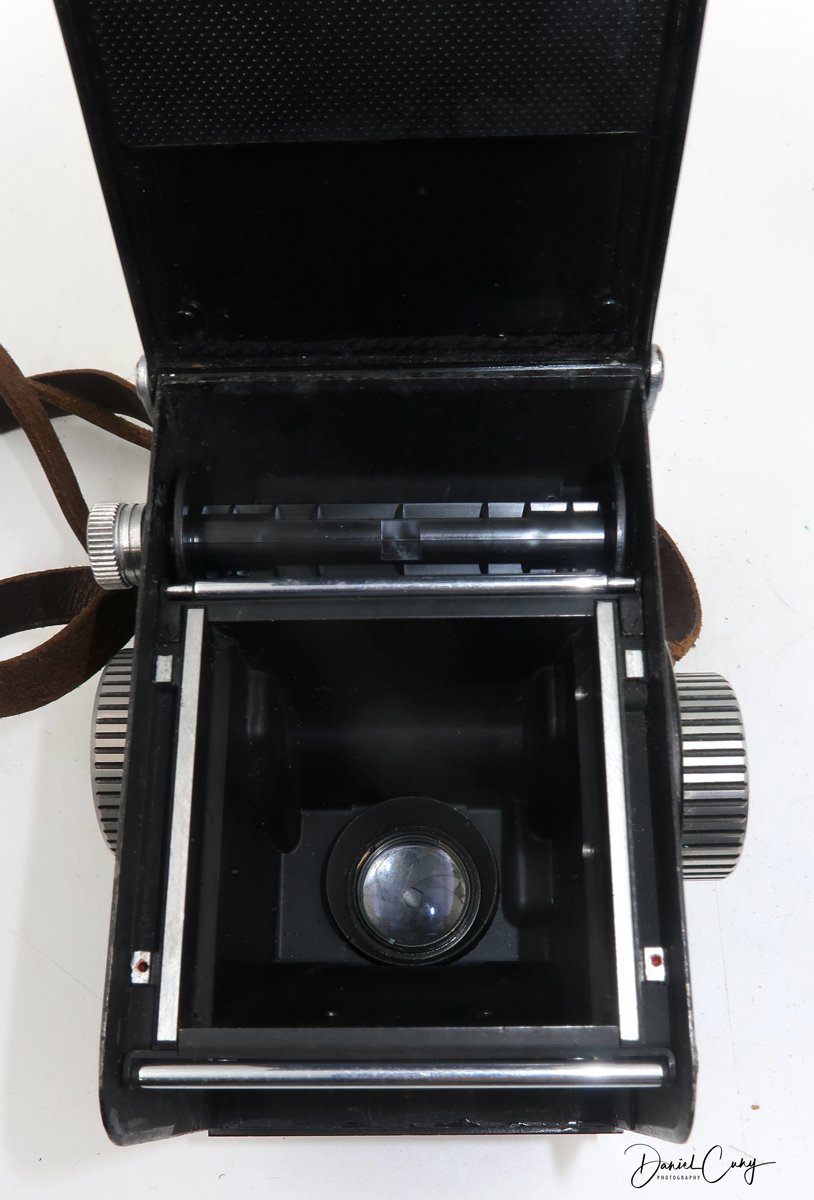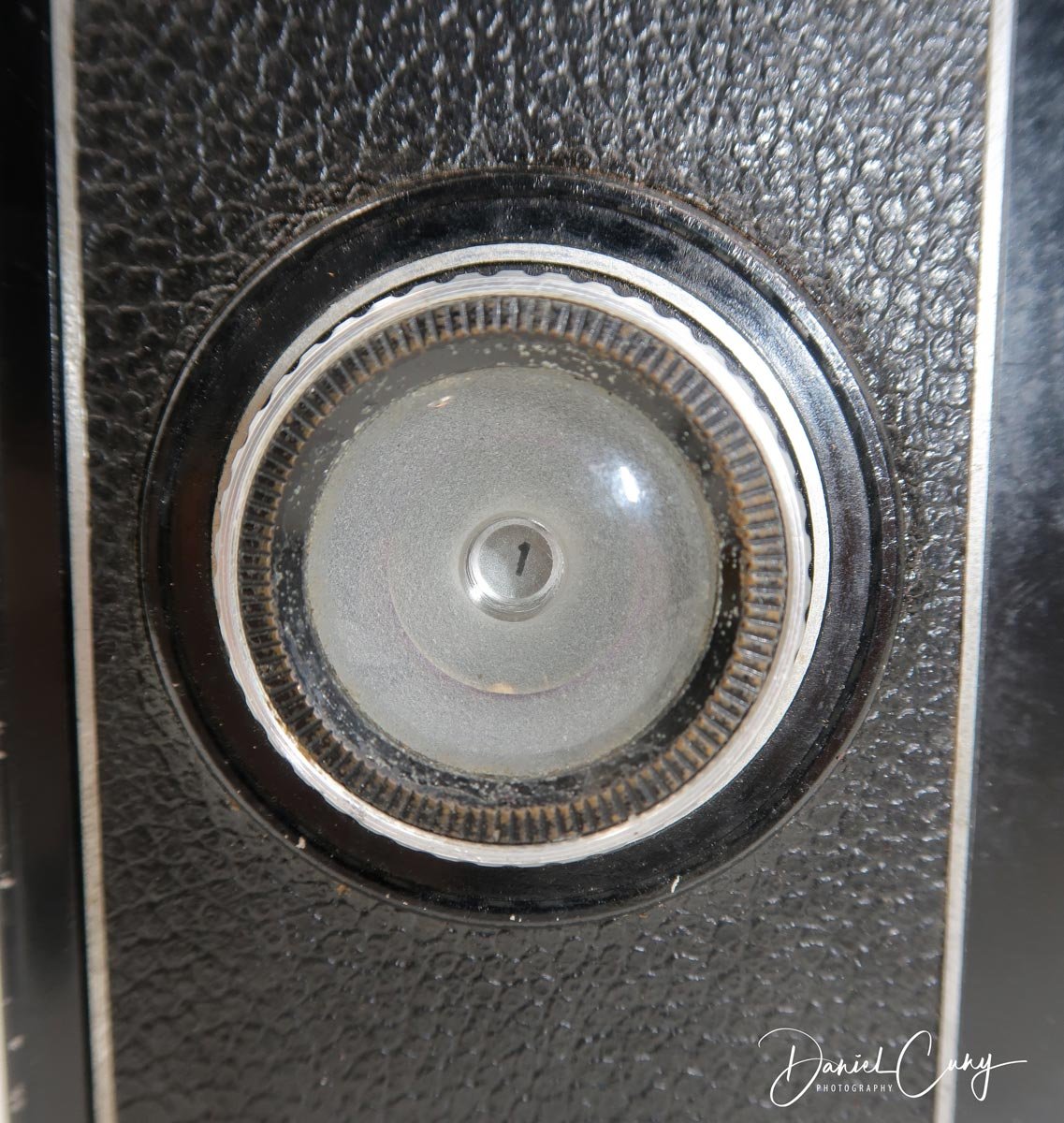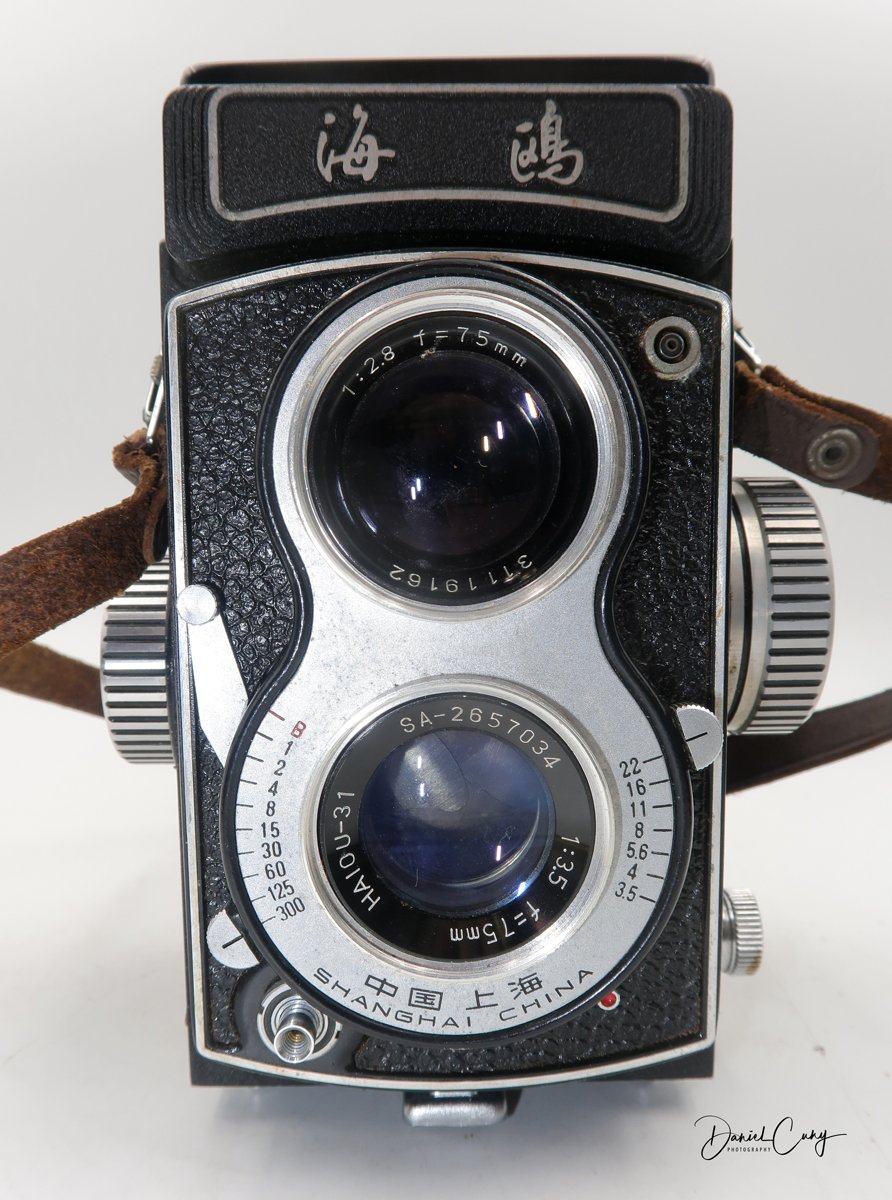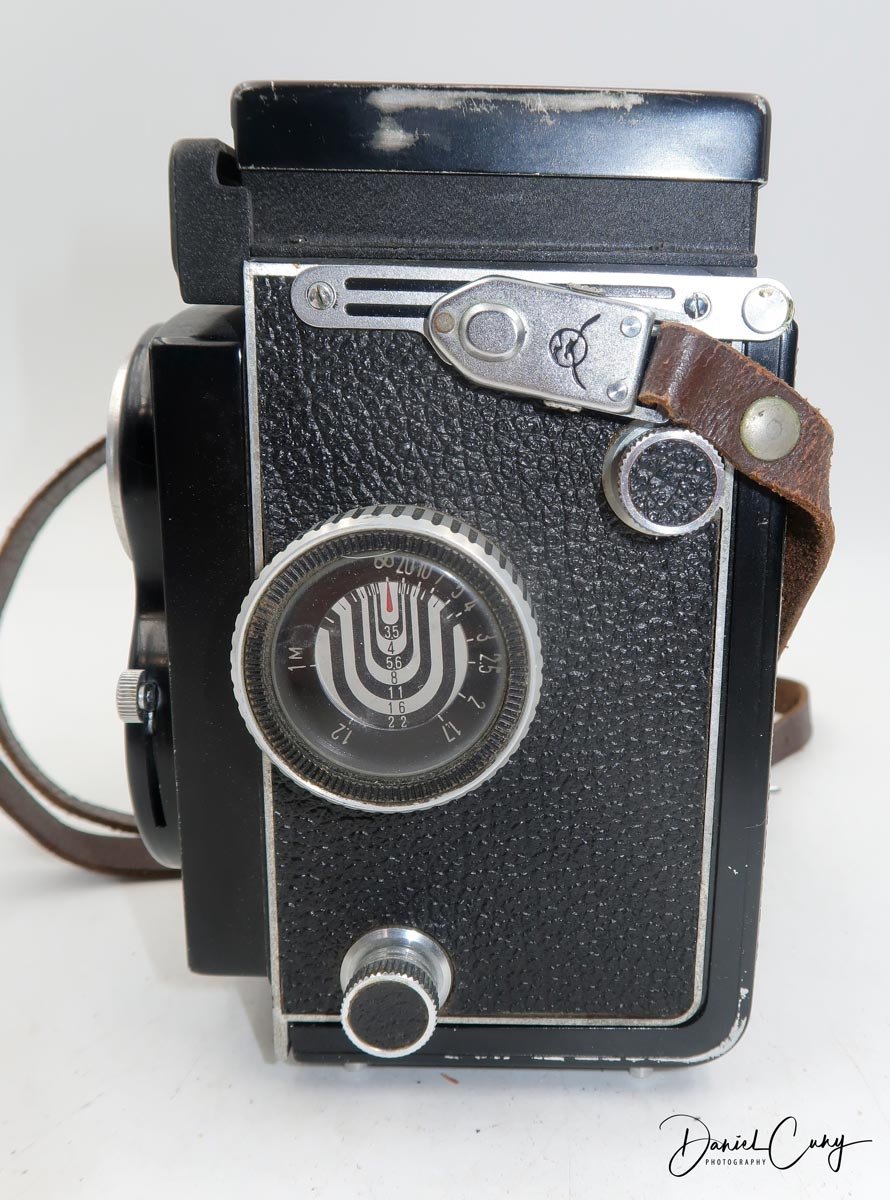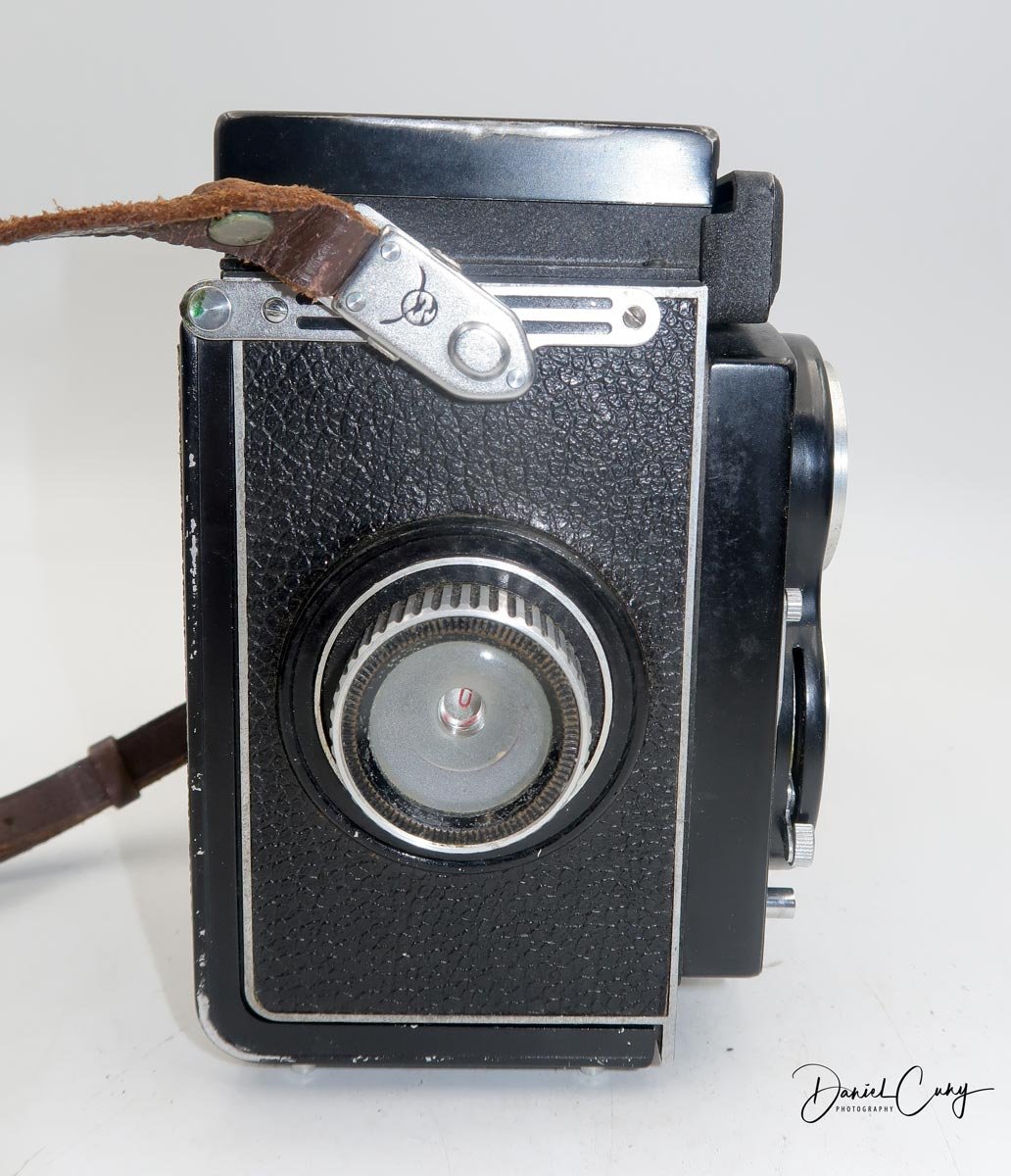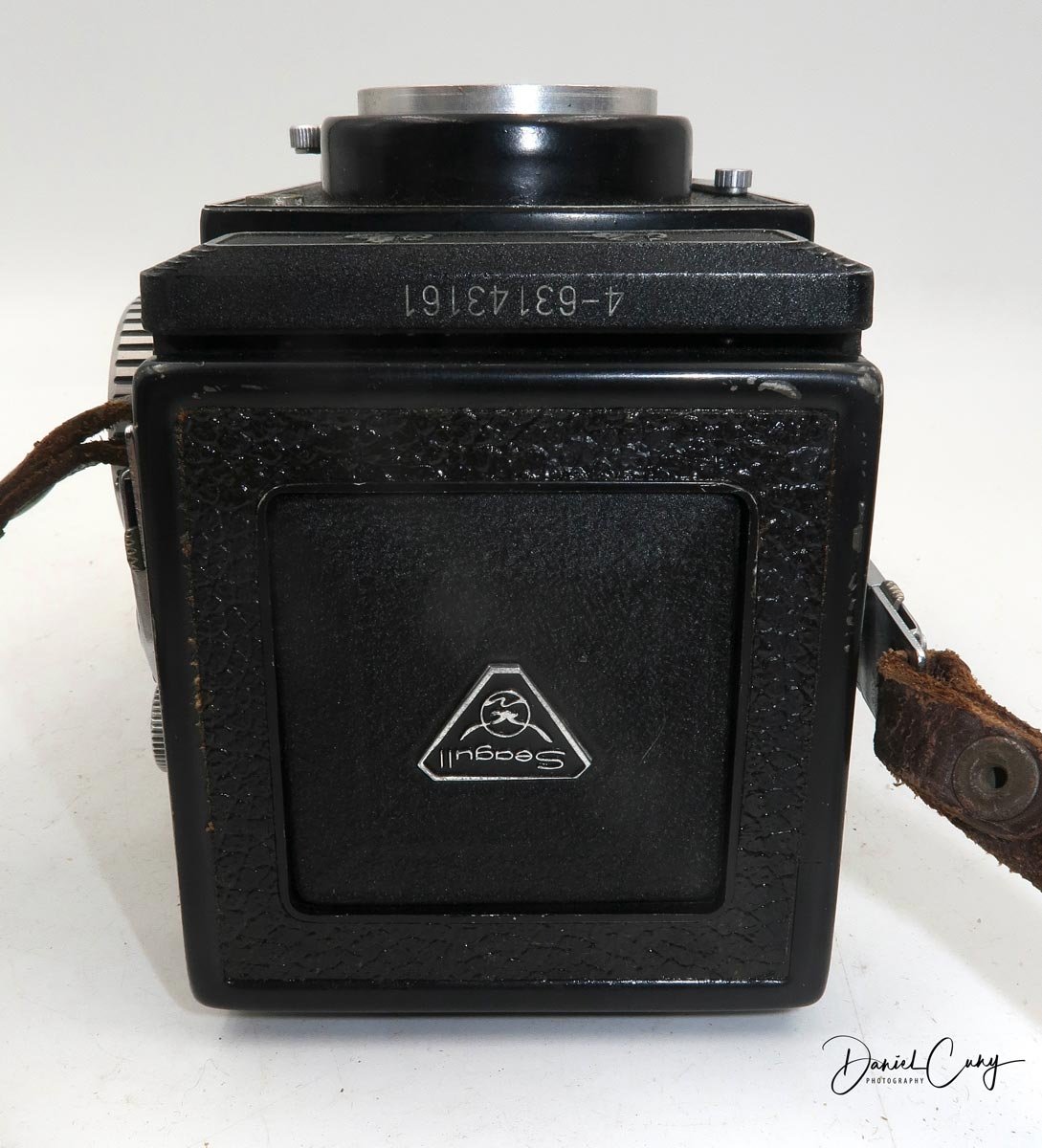My Rolleiflex K1 Camera
As is common for me, I purchased this original Rolleiflex model with many cameras, which included some other items I was more interested in. In the photo of the camera lot, I could see the Rolleiflex name, but the image was so small that I couldn't tell what model it was or even if it was in working condition. I took a shot; as I mentioned earlier, I was more interested in some items, and the Rolleiflex was more of the icing on the cake regarding the importance.
Once I received the items in the lot and looked them over, the main items were great, and I was happy to have them. I picked up the Rolleiflex and checked on the camera's serial number, which was a low number. I have serial number 118104. From what I can see online, this is one of the first batches of cameras made. While the original Rolleiflex camera was only made from 1929 to 1932, a few modifications were made.
In the photo, the Rolleiflex looked well used, and the top light chimney looked a bit wonky, which it was and still is today. When I tried to open the top, one of the side wings was jammed closed and wrapped under one of the other side wings, and I couldn't look down the chimney to see if the focusing screen was there. I took out my set of small screwdrivers and unscrewed the top 4 screws to remove the light chimney to fix it and bend the sides out a bit to make the chimney more usable.
Early Rolleiflex name and serial number
Once I took the top off, I noticed the focusing screen was in good condition and still had the bubble level. It was a very clever idea to put in the camera when it was manufactured almost 100 years ago.
The Company:
I reviewed the original Art Deco-style Rolleicord a few months ago, and here's what I wrote about the company's history then.
Rollei holds a significant place in photographic history. Founded in 1920 in Braunschweig, Germany, by Paul Franke and Reinhold Heidecke, the company originally bore the name "Franke & Heidecke." Initially, it focused on precision mechanical devices, but by the mid-1920s, Rollei began producing cameras that would revolutionize photography.
Rollei gained international recognition in 1929 with the launch of the Rolleiflex, the first twin-lens reflex (TLR) camera. The Rolleiflex was compact, robust, and designed for medium-format photography. Its unique twin-lens system featured one lens for viewing and focusing and another for capturing the image on film. This innovative design allowed photographers to frame shots at waist level, making candid photography more discreet and practical. The Rolleiflex quickly became a favorite among professionals and enthusiasts, particularly for portrait and documentary work.
The success of the Rolleiflex led to the introduction of the Rolleicord, a more affordable version aimed at amateur photographers. Both models showcased Rollei's commitment to precision engineering and optical excellence, which became hallmarks of the brand.
During the 1930s and 1940s, Rollei continued to innovate, refining the Rolleiflex and Rolleicord lines with features such as automatic film winding and improved optics. Despite the challenges of World War II, the company maintained its reputation for high-quality cameras. In the post-war era, Rollei played a significant role in the resurgence of the German camera industry.
The 1950s and 1960s marked a golden age for Rollei. The Rolleiflex TLR became synonymous with professional photography and was used by renowned photographers such as Richard Avedon, Diane Arbus, and Vivian Maier. Rollei also ventured into other formats and technologies. The Rolleiflex 35mm SLR, introduced in the late 1950s, showcased the company's adaptability to the changing market demands.
By the 1970s, the rise of Japanese camera manufacturers like Nikon, Canon, and Minolta introduced intense competition. These companies offered high-quality single-lens reflex (SLR) cameras at more affordable prices, challenging Rollei's dominance in medium-format and professional photography. However, Rollei's resilience and ability to adapt to changing market conditions inspired by its history.
In response, Rollei diversified its product line, introducing the Rolleiflex SL66, a medium-format SLR, and the compact Rollei 35, which became one of its most miniature 35mm cameras. Despite these innovations, Rollei struggled to maintain its market share due to its higher production costs and its competitors' rapidly advancing technology.
In the 1980s and 1990s, Rollei faced financial difficulties, leading to changes in ownership and restructuring. The company shifted focus to digital imaging and niche markets, including high-end studio cameras and digital backs for medium-format systems.
The Rollei legacy endures as a symbol of German engineering and innovation, reflecting a century of dedication to the art and science of photography. This enduring legacy evokes a sense of respect and admiration for the brand's contribution to the field of photography.
My Camera:
My early Model K Rolleiflex is 5.25" tall and 3.5" wide by 3.75" deep. These measurements are with the light chimney closed. If I open the light chimney, the camera is 7.5" tall and weighs 1 lb. 9.7 oz. with the original lens cap and without film loaded into the camera. My camera has a Carl Zeiss Jena Tessar 7.5cm f3.8 lens, serial #1310339, for the taking lens, and for the viewing lens is a Heidoscope Anastigmat 75mm f3.1 lens, serial #120850.
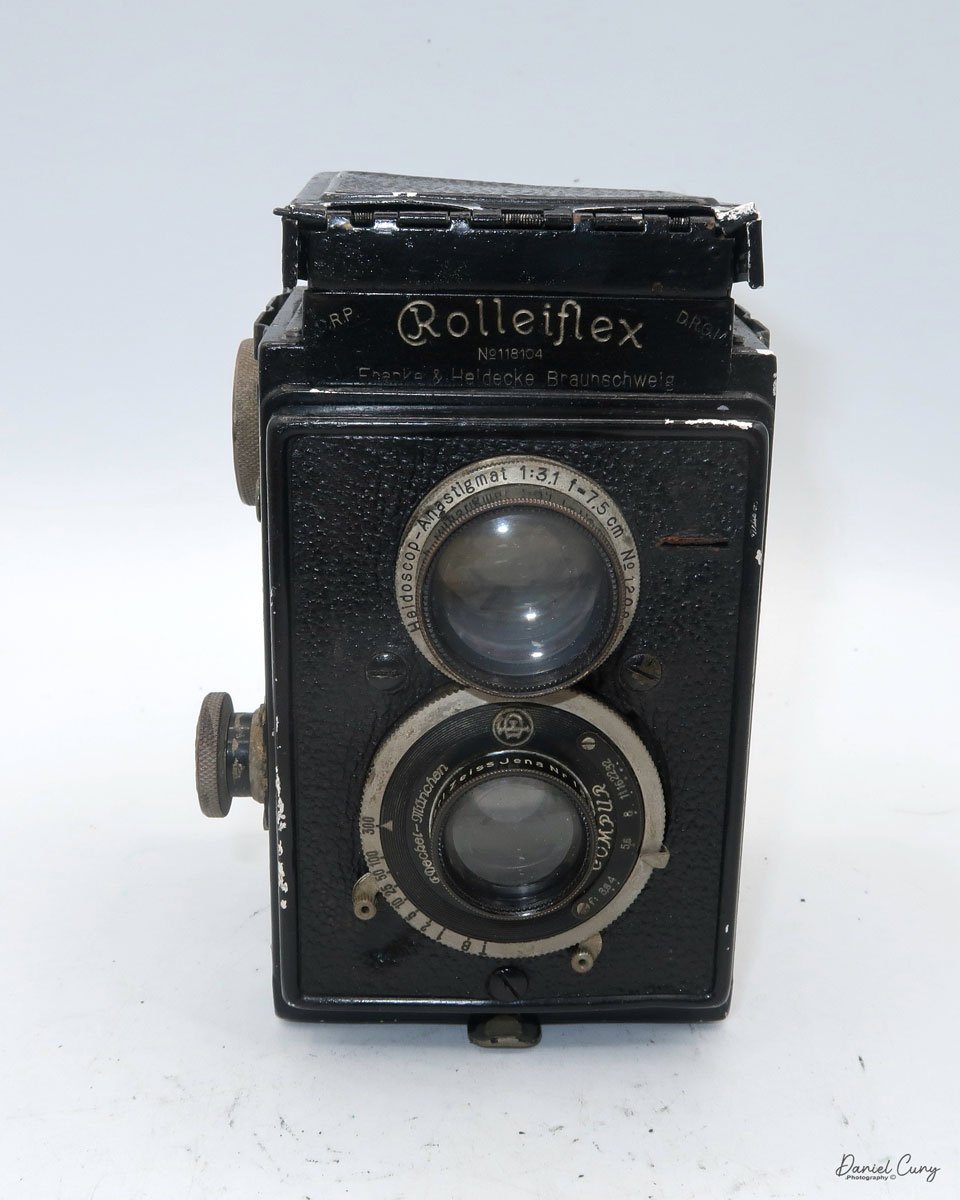
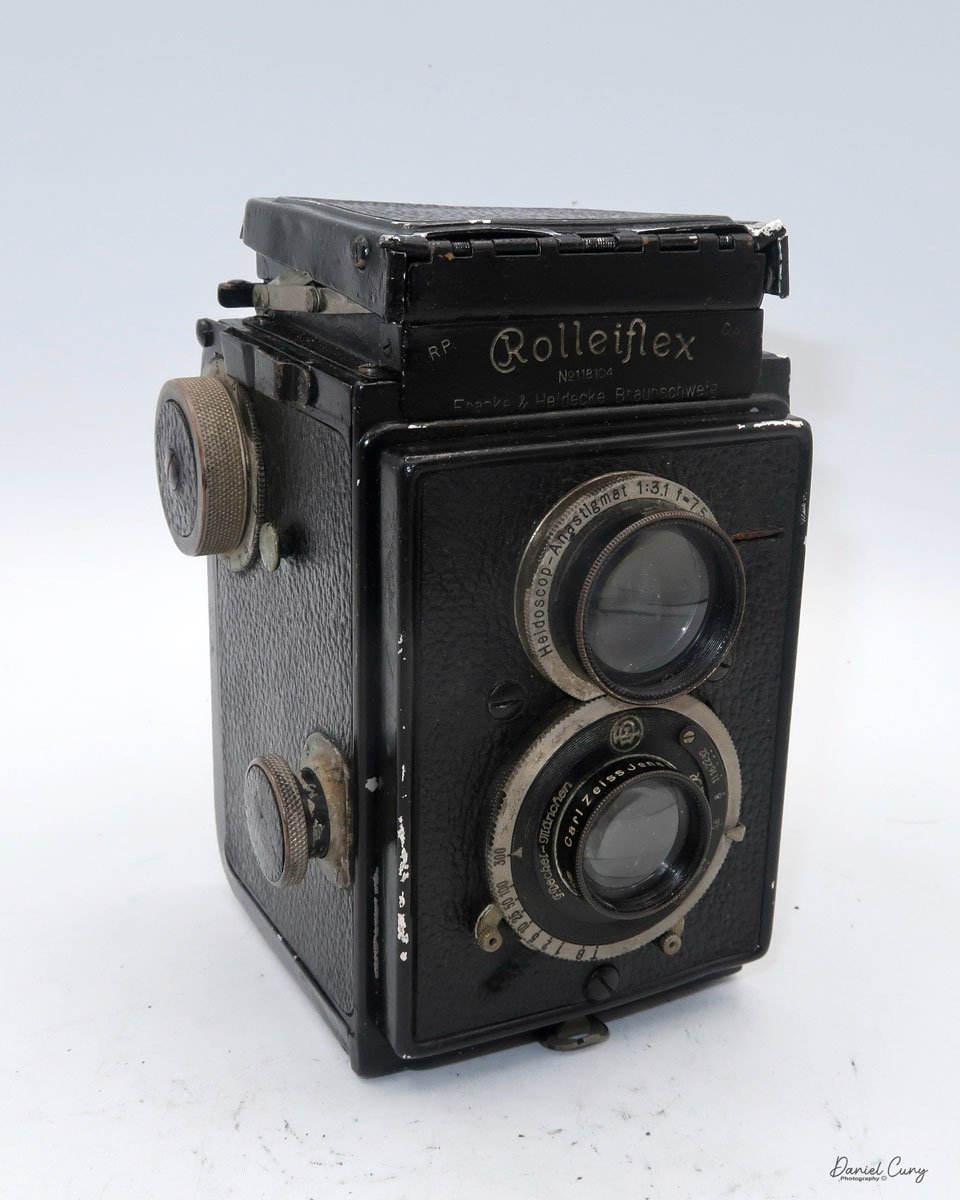
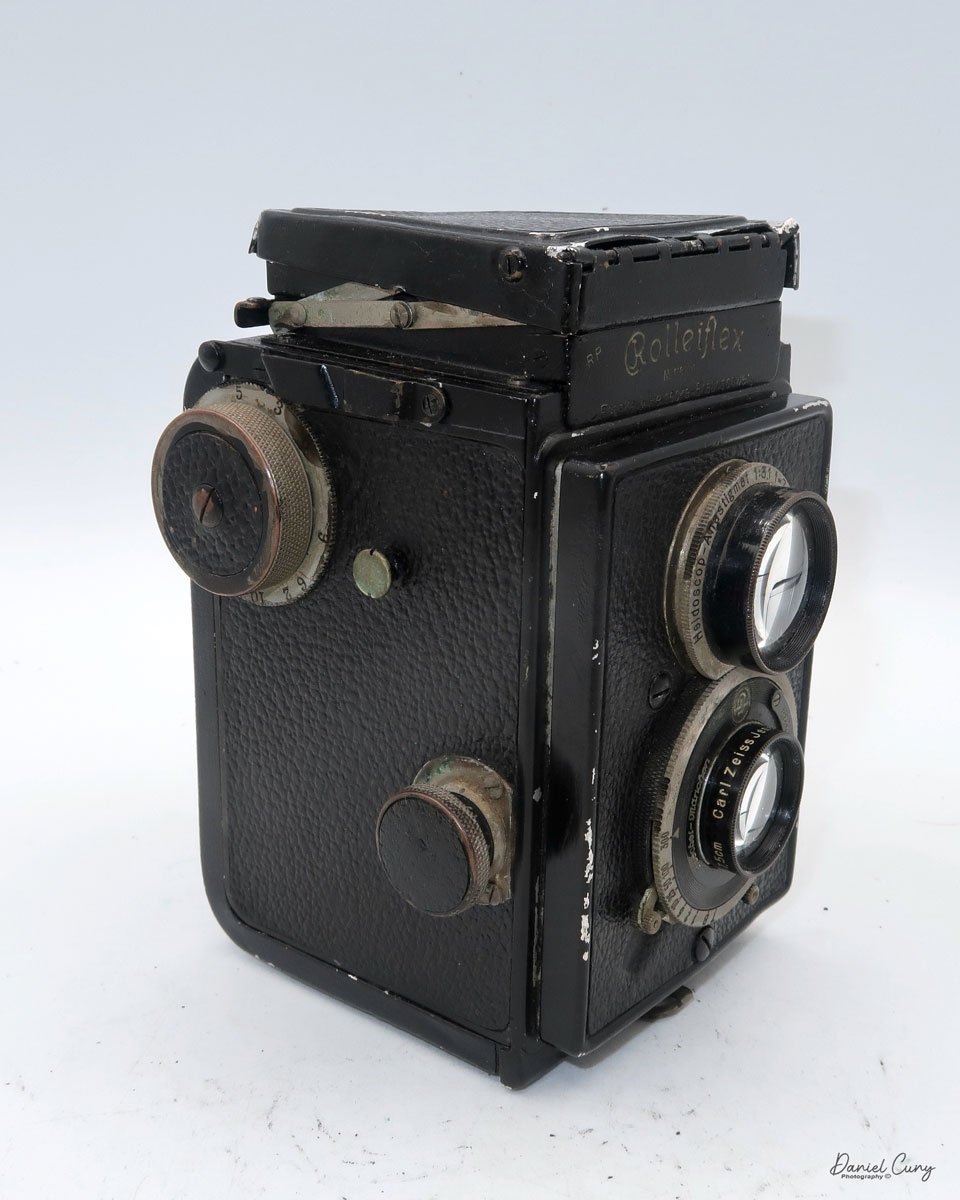
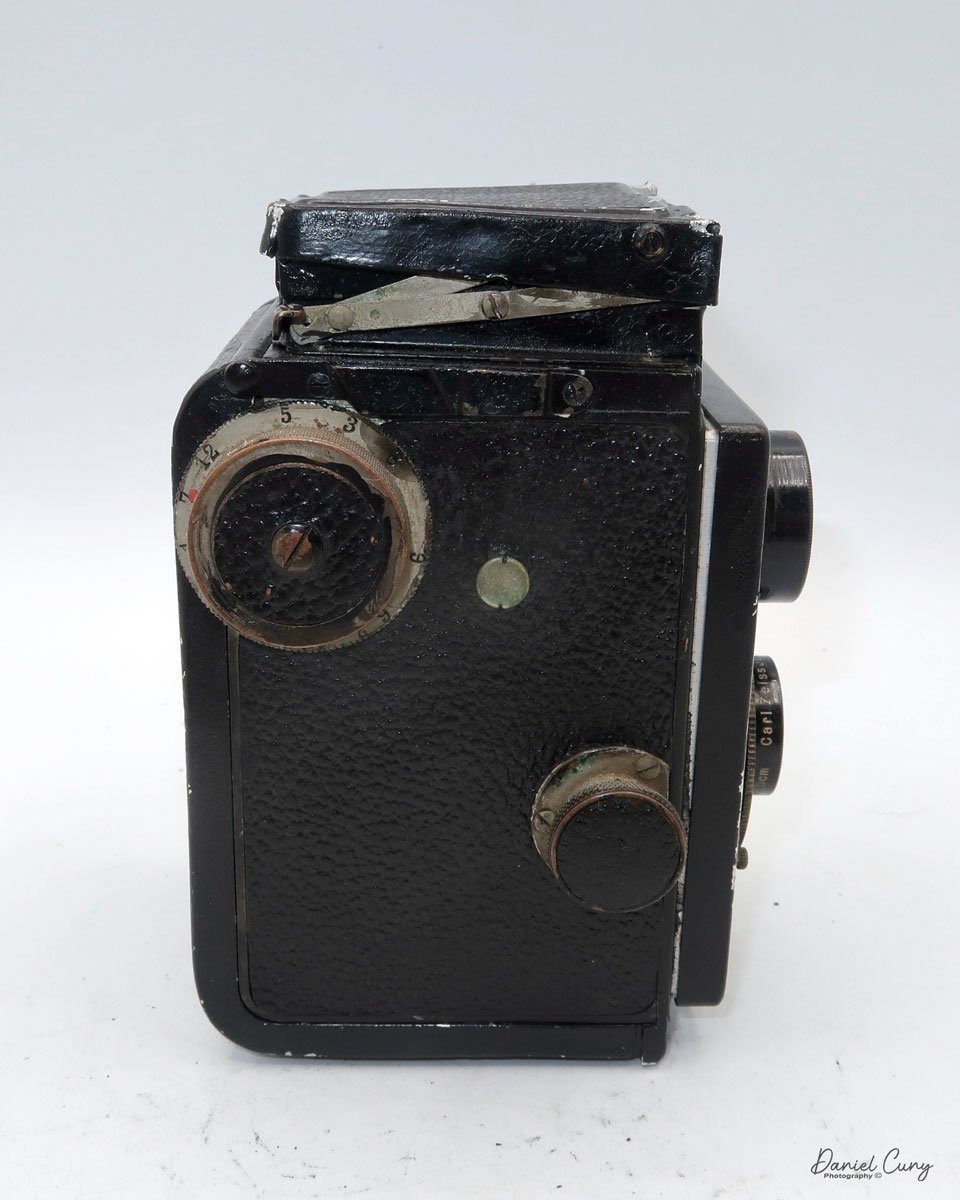
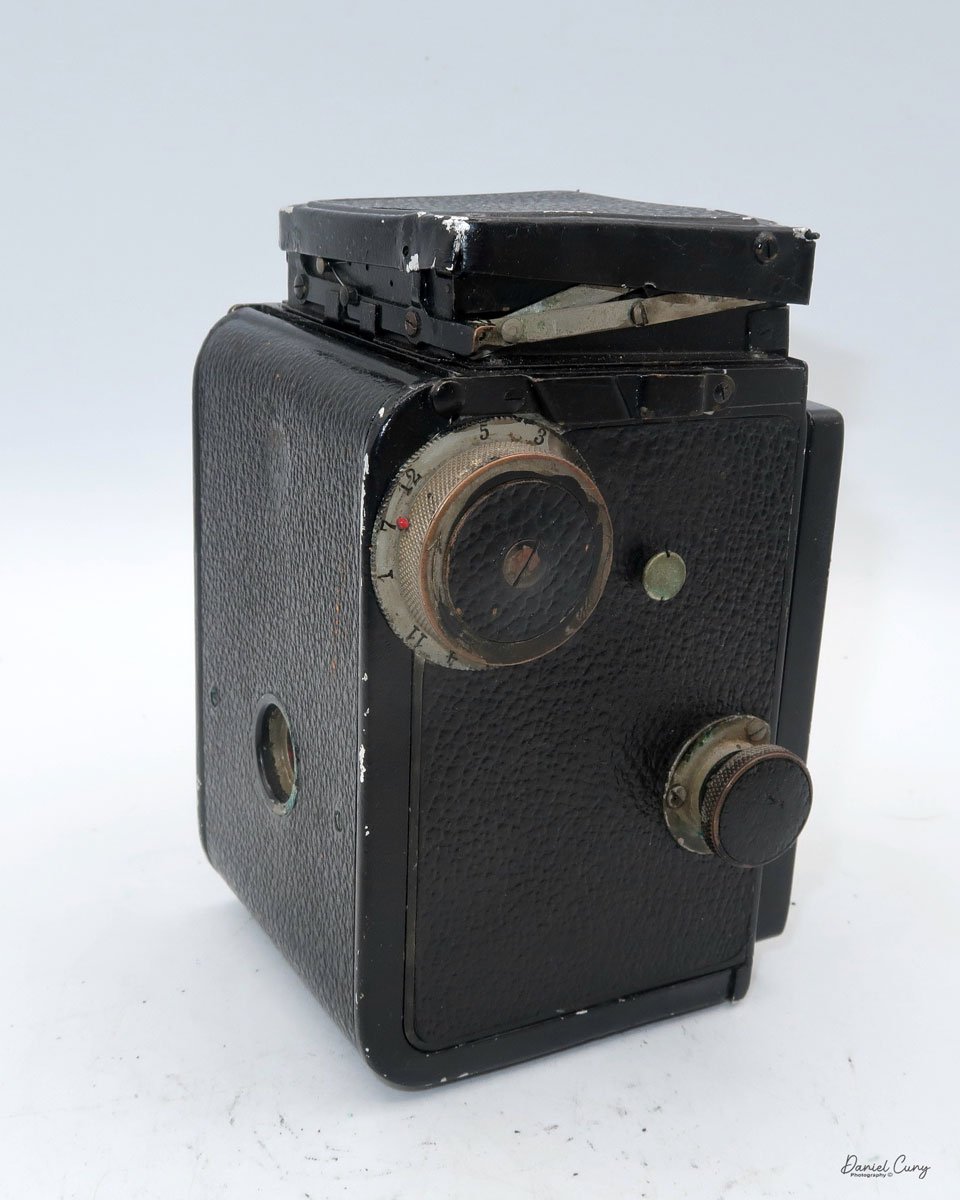
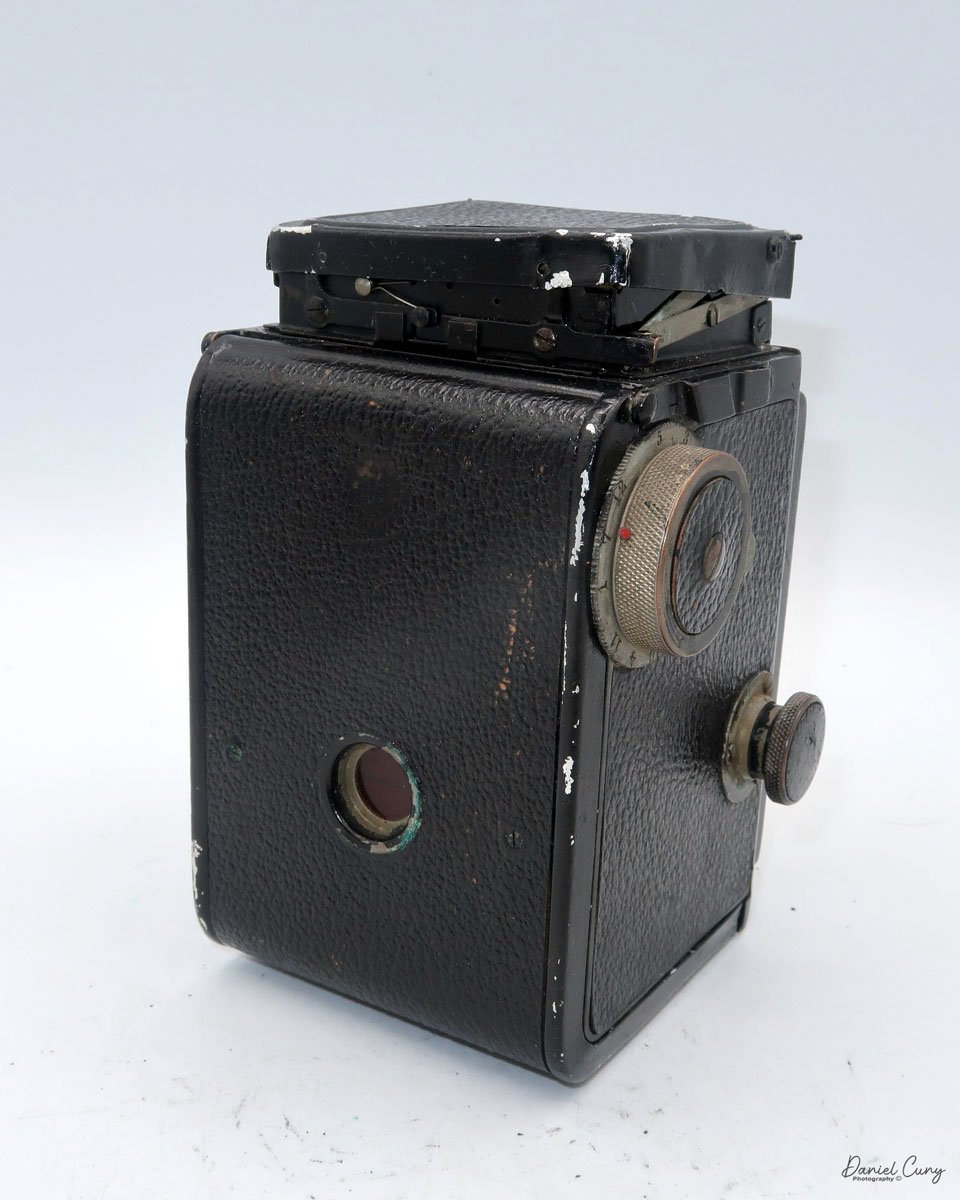
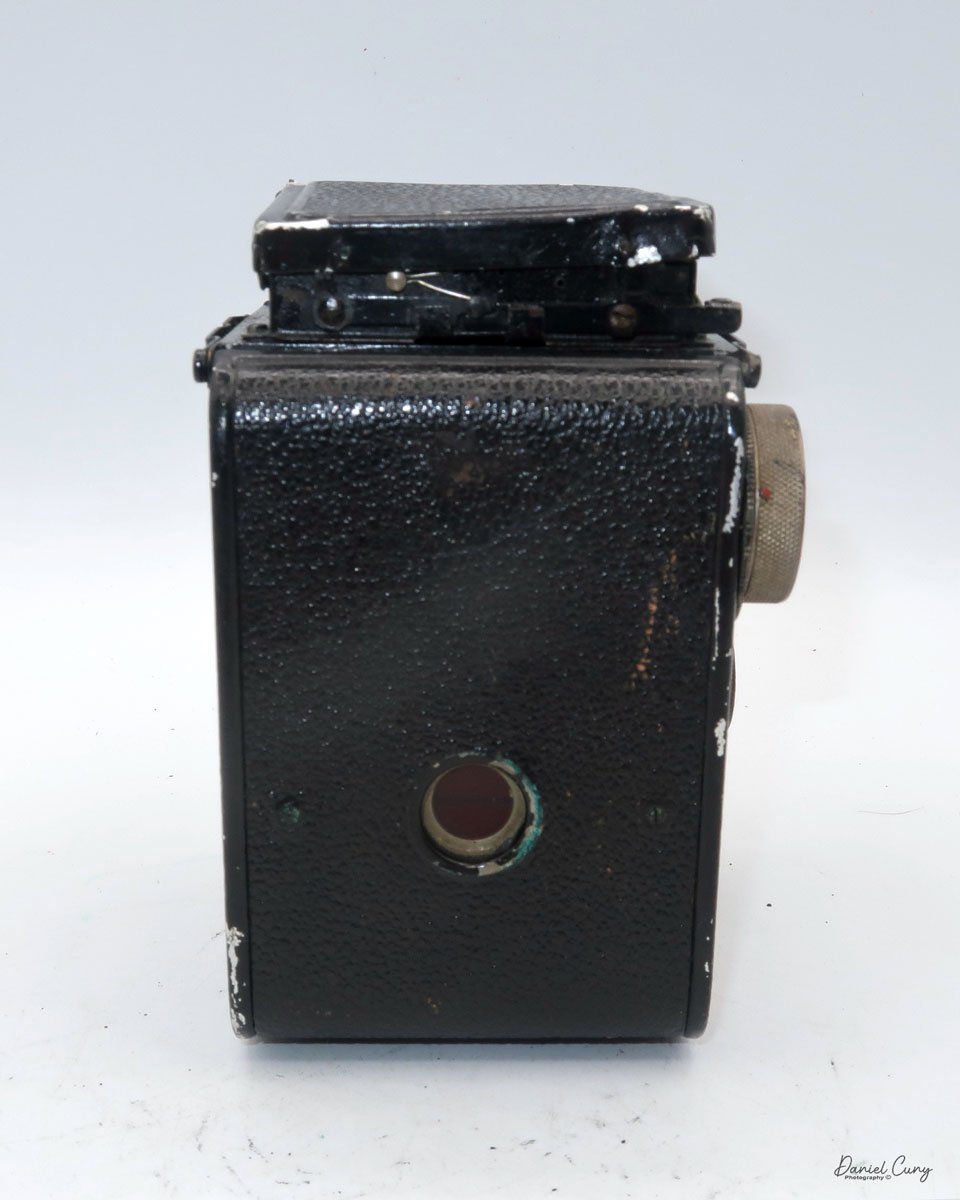
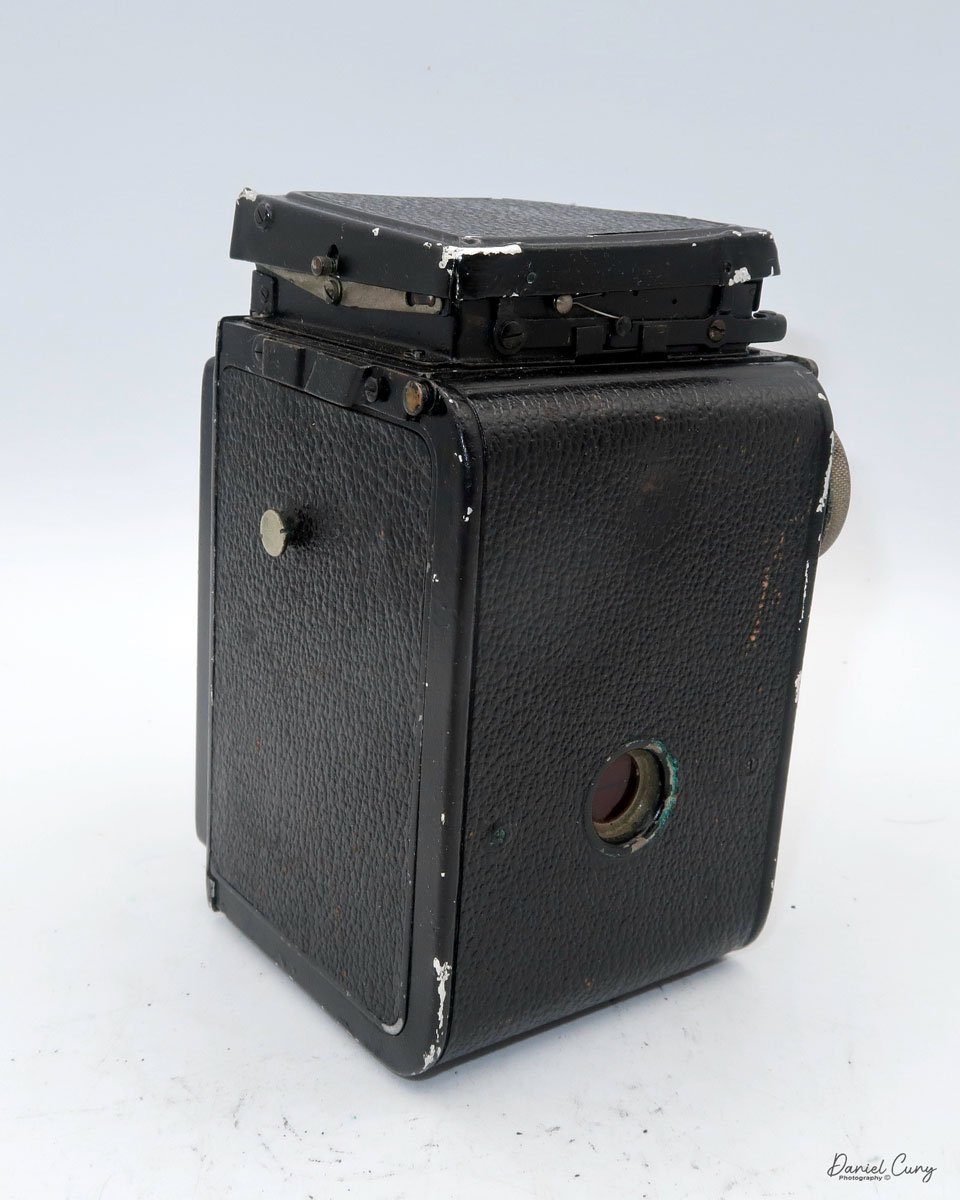
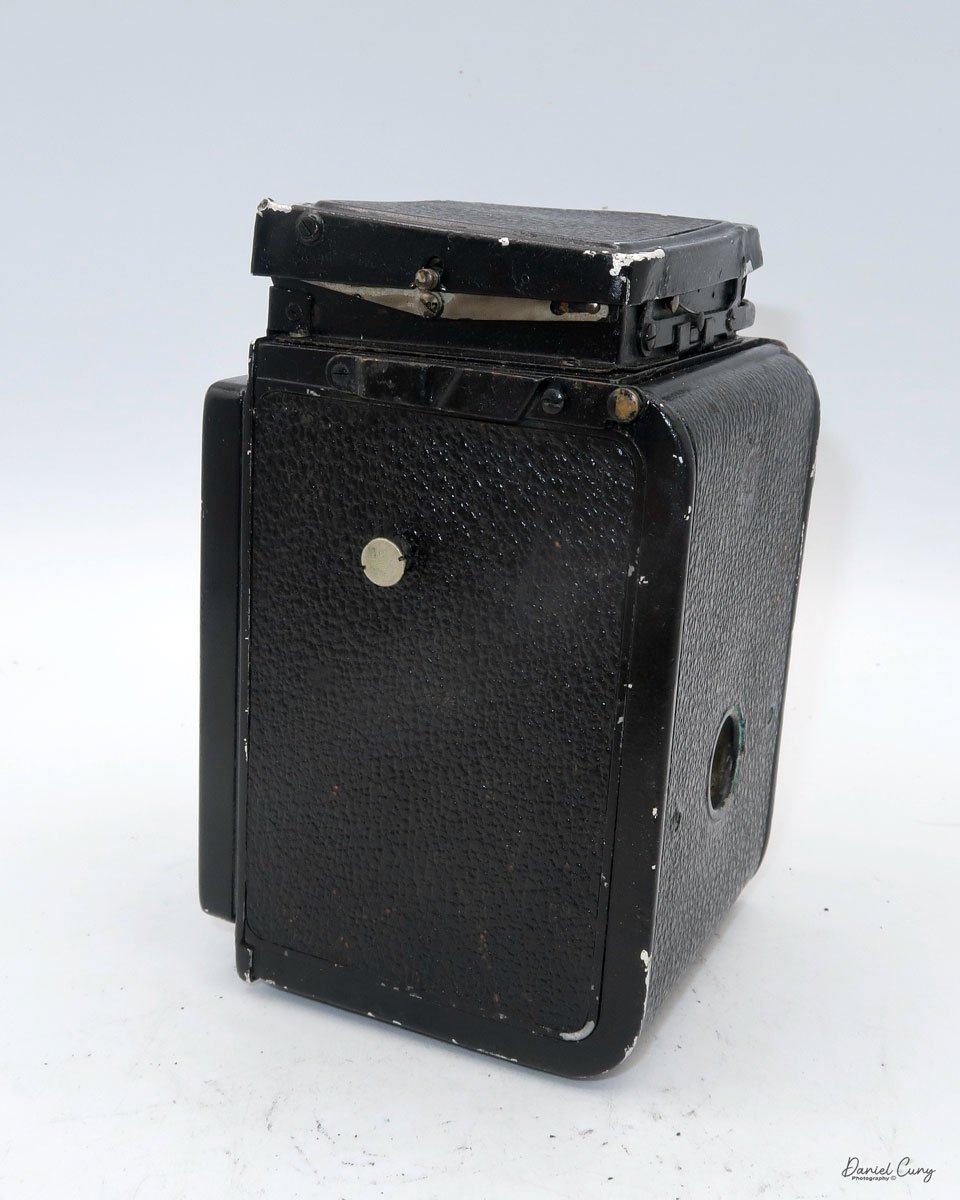
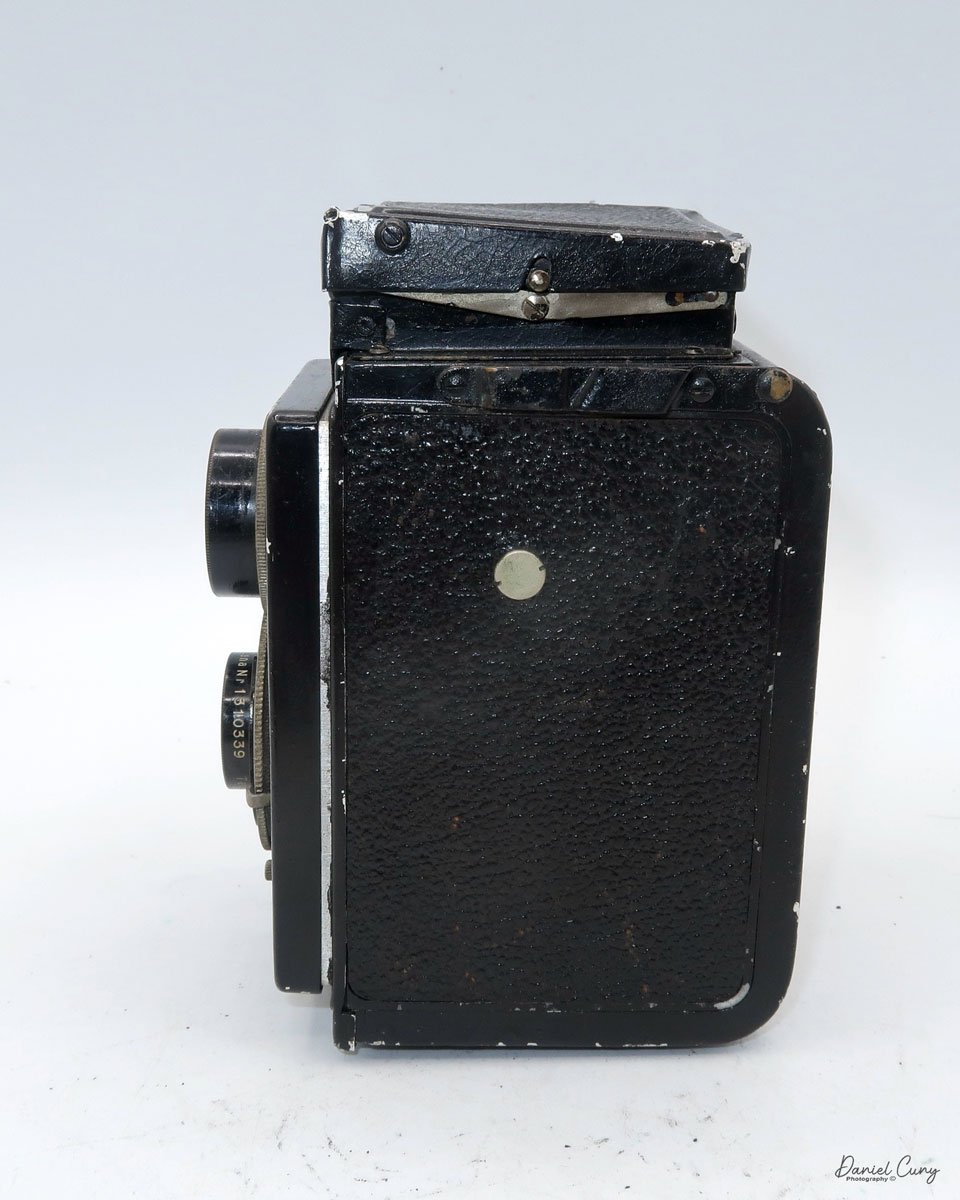
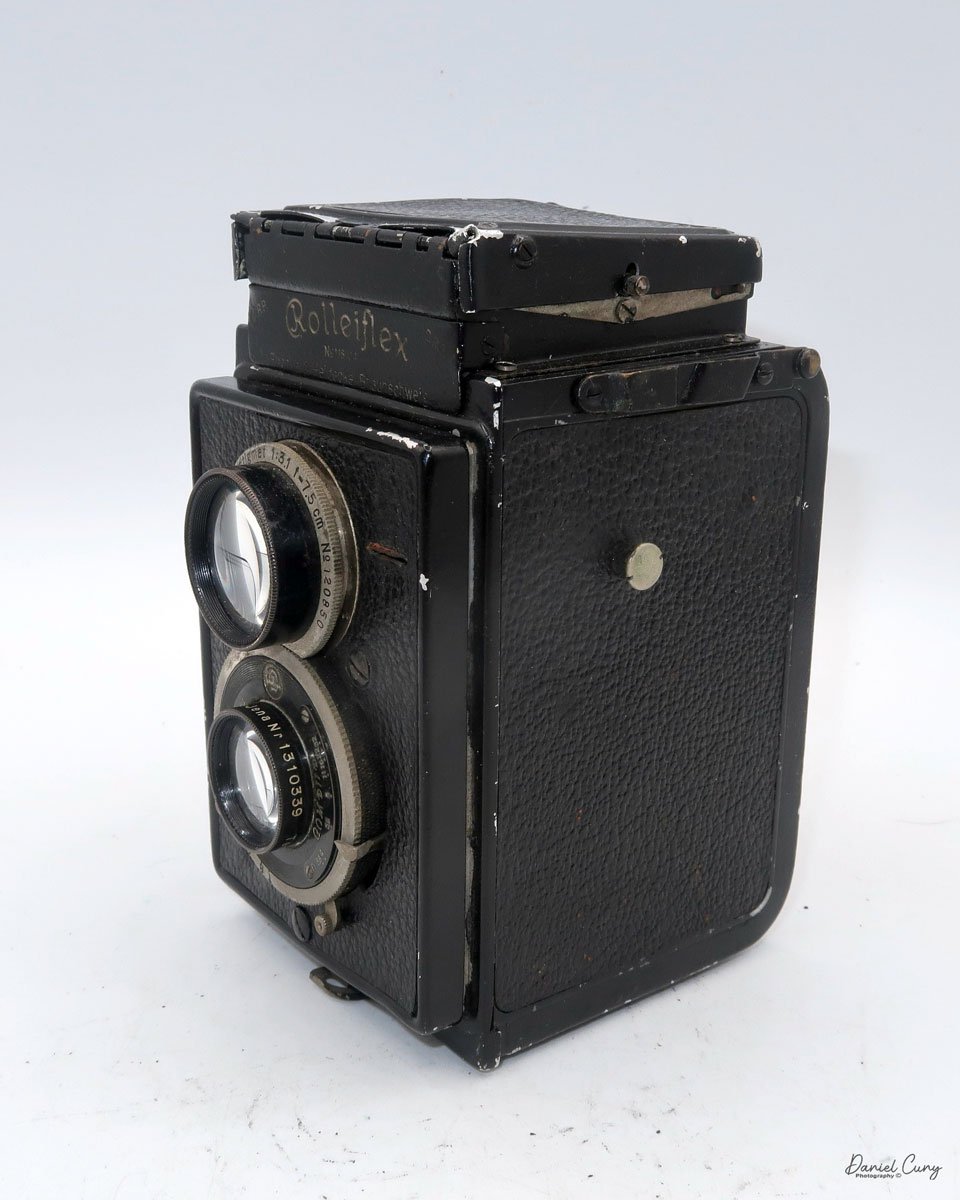
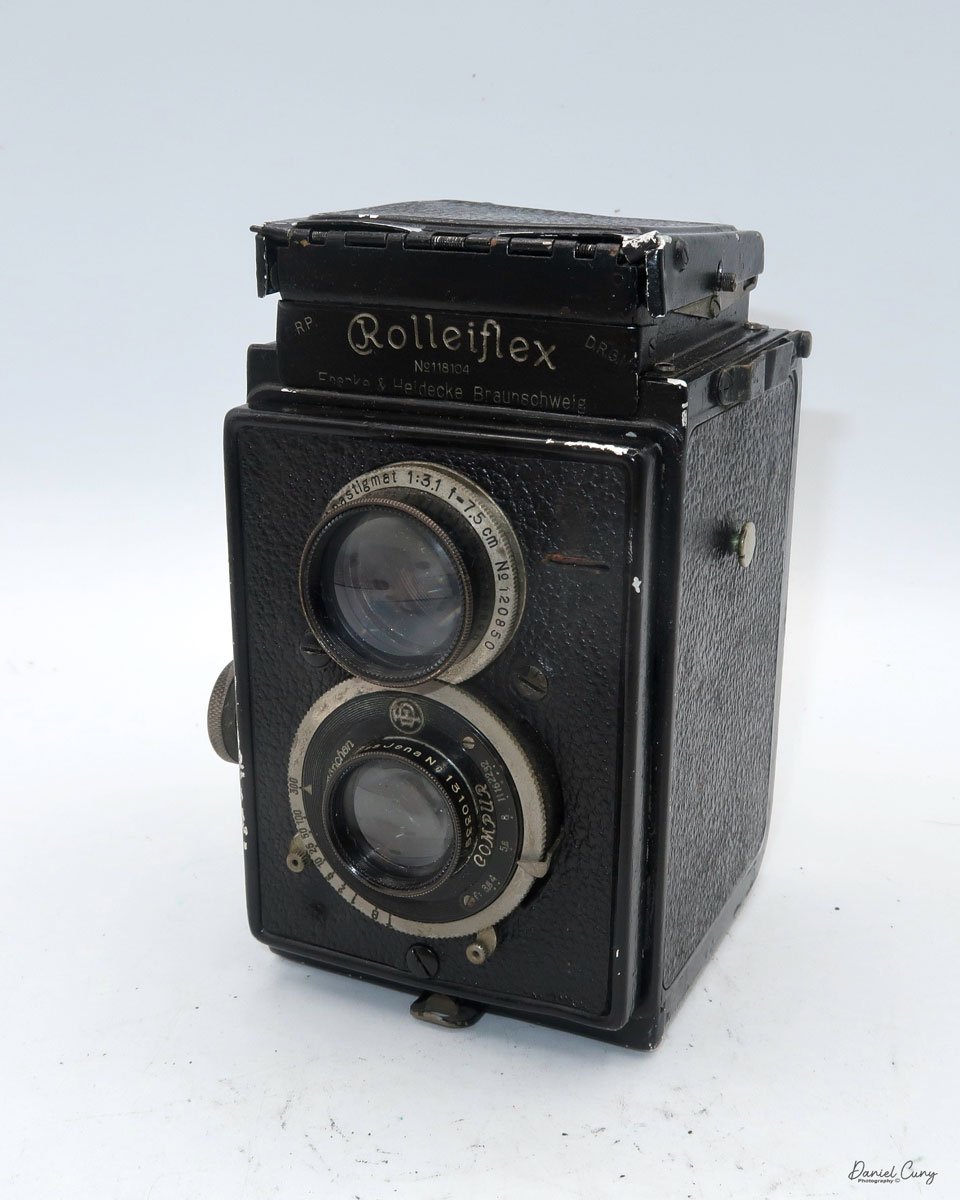
The lens is in an F.Deckel-Munchen Compur shutter with speeds from 1/300 to 1 sec. along with "B" & "T". The shutter speeds are set by turning a chrome ring on the outside of the shutter ring. The shutter cocking lever is on the left side of the camera as you view it from the front, and the shutter release is on the right side. The aperture ring goes from F3.8 to F32 and is set by a sliding ring just outside the shutter ring.
Taking lens, and shutter-aperture settings on my original K1 Rolleiflex
The light chimney or light hood is the most interesting thing about the camera. To open the light chimney, on the back of the camera, there is a small lever you need to press down to unlock the chimney. The front and sides will spring open if the chimney is in good working order. Since mine is not in perfect condition, the front opens, but I need to coax the sides to open correctly. Once the chimney is open, you can view the focus screen.
On the back of the chimney is a magnifying glass on a spring. It can be flipped over and locked into the front part of the chimney, where it can be used for critical focus. Pressing the front part of the chimney releases the magnifying glass, and it returns to its normal position.
On the backside of the front wing of the chimney was a mirror, or a highly polished metal piece that flips down with a lever on the left side of the chimney. When the magnifying glass is in the "up" position, and you flip the lever down, the mirror will be at an angle that you can use the back as a level finder and focus the camera while viewing the image through the back opening of the chimney. I really liked this feature as it gives the camera a lot of flexibility when shooting. To close the chimney, fold down the sides first; the back and the front will close, covering the camera.
On the right side of the camera are two knobs. The larger knob on the top is the film advance knob. Around the knob are numbered from 1-12, but the numbers aren't in order; they go 1,7,12, small space, then 5,3,8, small space, 9, small space, and 6,2,10,1,11. At first, I thought these were frame numbers, but the sequences are so off. I know the first camera models were made for film size 117, and the camera only took six exposures with larger gaps between frames. There is also a red arrow pointing towards the number, but it didn't change when I put the film in the camera and advanced it to the next photo. Maybe someone can explain this sequence to me.
The lower and smaller knob is the focus knob. On the inside are distance numbers, but there is no feet or meter setting. On the camera's left side is a lug, which was used to connect the strap.
The back door locking mechanism is on the bottom of the camera, and there is a tripod socket and a second red window with a cover. I didn't use that frame counting window, as I used the one on the back of the camera as I would for most cameras. To open the back door to load film, you lift the silver-hinged locking mechanism, which opens the back door. After doing some research on the camera, I found that this model doesn't take 120 film like all the other Rolleiflex models.
I tried anyway, and it's too wide and didn't fit into the film chamber. Luckily, I have some outdated Agfa 620 films that fit correctly. I put the empty spool on the top. You can pull out the larger knob to load film into the camera, then press it in to lock the reel into place. I put the outdated Agfa roll into the camera, fed the leader into the empty spool, wound the film to start, closed the back of the camera, and wound the film to frame number 1. Now, I'm ready to take the camera out on an adventure to see how the camera performs.
My Results:
My wife and I planned a trip to Lake Quinault in the Olympic National Forest, so I wandered the lake's hotel grounds with a fantastic camera loaded with film and took some photos. Here are a few of the images from this trip.
Conclusion:
The camera performed very well, and the images were nice and sharp. The focusing screen was dark compared to the newer cameras. Still, it did an excellent job for a camera almost 100 years old and was extremely fun to shoot with. Due to the age of the film, the images have a mottled appearance when looking at something without detail, like the sky or lake. But that doesn't affect the camera's usability, which was overall very good.
I'd love to hear from you. If you have one of these cameras and have questions or want to let me know what you think of the camera, please leave a comment, and I'll get back to you soon.
Thank you for taking a few minutes from your day to read about this fantastic camera.
Until next week, please be safe.


















































